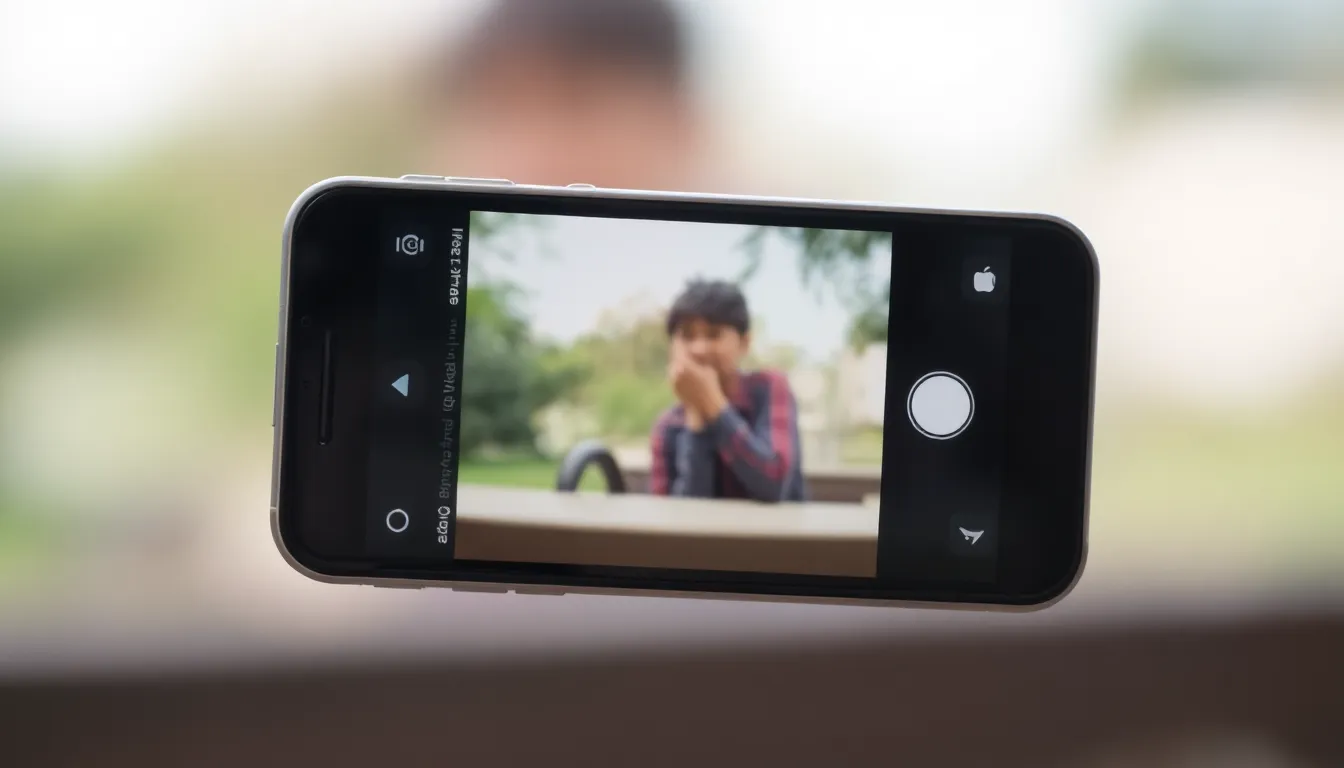Table of Contents
ToggleEver wondered why those stunning iPhone pictures look like a fuzzy mess when viewed on an Android device? You’re not alone. It’s like trying to watch a blockbuster movie through a potato! Despite both being smartphones, the way they process and display images can lead to some seriously confusing results.
Understanding the Issue
Differences in image processing between iPhones and Android devices often lead to blurry photos. This section delves into the technical elements affecting image quality and the impact of screen resolution.
The Technical Aspects of Image Quality
Image processing involves multiple factors, including compression algorithms and color profiles. iPhones utilize proprietary processing methods that may not translate well to Android devices, causing visible artifacts. Compression techniques shrink file sizes, but these methods can degrade quality. When viewing an iPhone photo on an Android phone, discrepancies in color representation and sharpness become apparent. Variations in software can further exacerbate blurriness, as each operating system interprets images differently.
The Role of Screen Resolution
Screen resolution plays a crucial role in image clarity. Android devices often feature a range of resolutions from HD to 4K, impacting how images appear. Additionally, differences in pixel density can affect sharpness, with high-density screens displaying finer details. If an iPhone photo is viewed on a lower-resolution Android screen, it may appear less sharp due to a lack of detail. Conversely, viewing the same photo on a high-resolution device enhances clarity. The interplay between image quality and resolution significantly influences the viewer’s experience.
iPhone vs. Android Camera Technology

The differences between iPhone and Android camera technology contribute to variations in image quality. Direct comparison highlights how proprietary algorithms affect photo clarity across devices.
Differences in Image Processing
Image processing methodologies vary between iPhone and Android devices. iPhones utilize specialized processing techniques that focus on enhancing specific aspects of an image. Android phones, in contrast, may implement more generalized processing methods, which can lead to discrepancies in sharpness or detail. Each manufacturer on the Android platform often customizes image processing, resulting in a wide range of outcomes. Some Android devices might experience a loss of clarity when displaying iPhone photos, as they might not interpret the processing as intended. This inconsistency further explains why an iPhone picture may look different when viewed on an Android device.
Compression and File Formats
Compression techniques greatly impact image quality on both iPhone and Android devices. iPhones often save images in the HEIC format, which preserves detail while minimizing file size. Conversely, many Android devices use JPEG as their primary file format, which can lead to more significant loss in quality due to increased compression. The efficiency of HEIC allows iPhone photos to retain more information yet may complicate compatibility with Android devices. While Android devices may adjust the displayed image to fit their format, this adaptation can introduce artifacts or blurriness. These disparities in compression methods ultimately affect how photos are perceived when shared across different platforms.
User Experiences and Anecdotes
Users frequently share experiences of blurry iPhone pictures on Android devices, creating noticeable frustration.
Common Complaints from Android Users
Android users often report dissatisfaction when viewing photos taken on iPhones. Many describe images appearing soft or lacking clarity. Some mention color distortions that don’t match what they see on the iPhone. Complaints about images looking less vibrant than expected are also common. Additionally, the inconsistency in sharpness contributes to overall disappointment. As a result, the experience can feel like an unintentional downgrade in photo quality. Online forums show users expressing confusion as they compare the same images across devices.
Impact of Lighting and Conditions
Lighting conditions also play a crucial role in how iPhone pictures appear on Androids. Low-light situations commonly lead to increased blur, as both devices adapt differently to such environments. Bright sunlight often highlights discrepancies in color and detail, with iPhone photos losing their expected sharpness. Users notice graininess in images captured under poorly lit conditions, further complicating the viewing experience. Furthermore, certain settings may exacerbate these issues, making it essential for users to consider their environment when capturing images. Overall, enlightening conditions affect the perception of photo clarity across different devices.
Solutions and Tips for Users
iPhone pictures may seem blurry on Android devices, but various solutions can enhance clarity. Users can try adjusting their settings and using recommended apps for improved images.
Adjusting Settings for Better Clarity
Tweaking settings often helps in obtaining clearer pictures. Adjusting the camera resolution on Android devices might improve photo quality; selecting the highest resolution available maximizes detail. Enabling grid lines assists in composition, ensuring better framing and focus. Using HDR features can enhance photos taken in challenging lighting conditions, improving the contrast and sharpness of images. Lastly, turning off any automatic enhancements allows users to maintain the original quality of iPhone-saved pictures.
Recommended Apps for Image Enhancement
Several apps offer powerful tools to enhance photos taken on iPhones and viewed on Android devices. Snapseed provides advanced editing features, including sharpening tools that enhance detail and clarity. VSCO delivers high-quality filters that can amplify vibrancy and reduce blur. Adobe Lightroom offers professional editing capabilities, allowing users to adjust lighting and sharpness efficiently. These applications not only improve image quality but also elevate users’ overall photo experience.
Understanding the reasons behind blurry iPhone pictures on Android devices can help users navigate the challenges of cross-platform photo sharing. The differences in image processing and display technology play a significant role in how photos are perceived. By recognizing factors such as compression algorithms and screen resolution, users can make informed decisions to enhance their photo experiences.
Implementing suggested tips and utilizing recommended apps can also bridge the gap in image quality. Ultimately, awareness of these disparities empowers users to appreciate the unique strengths of each device while minimizing frustration when sharing memories across platforms.




